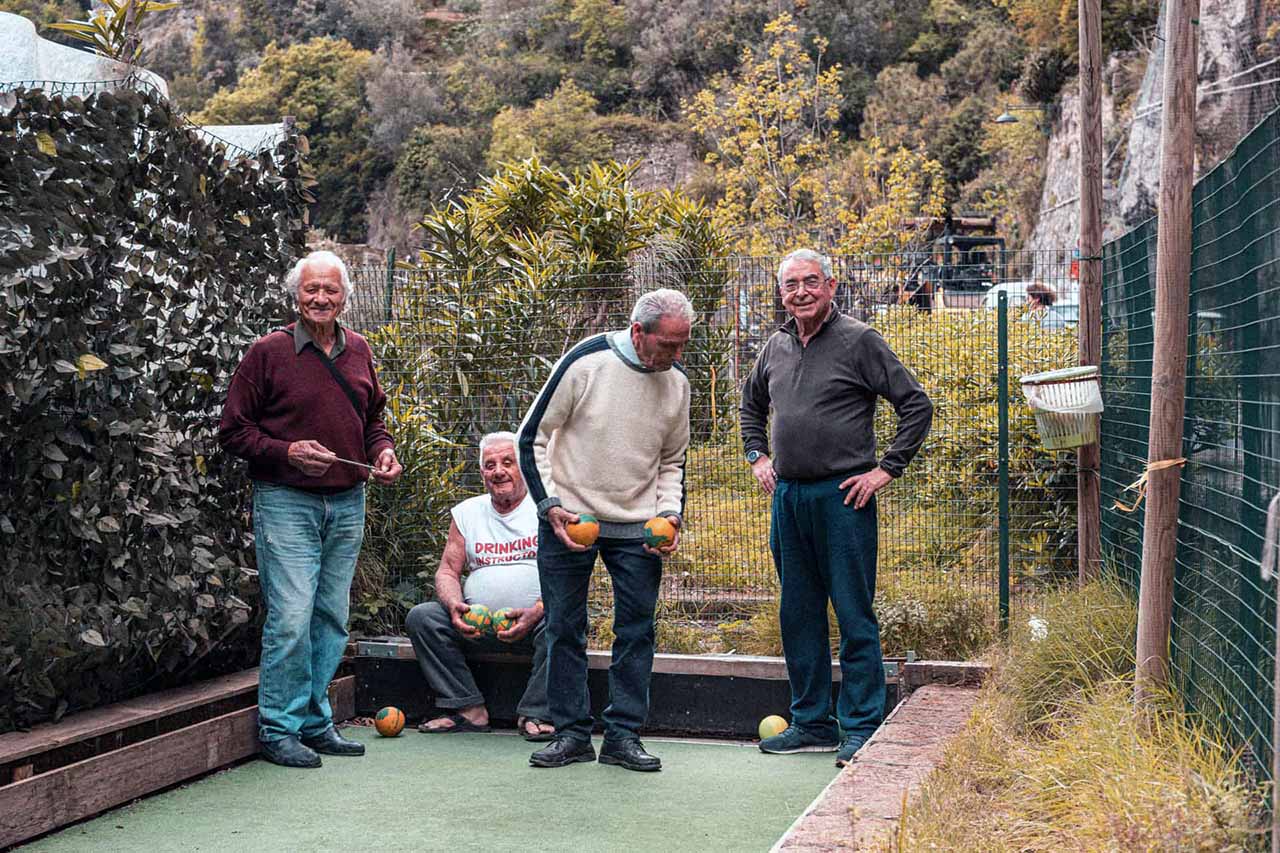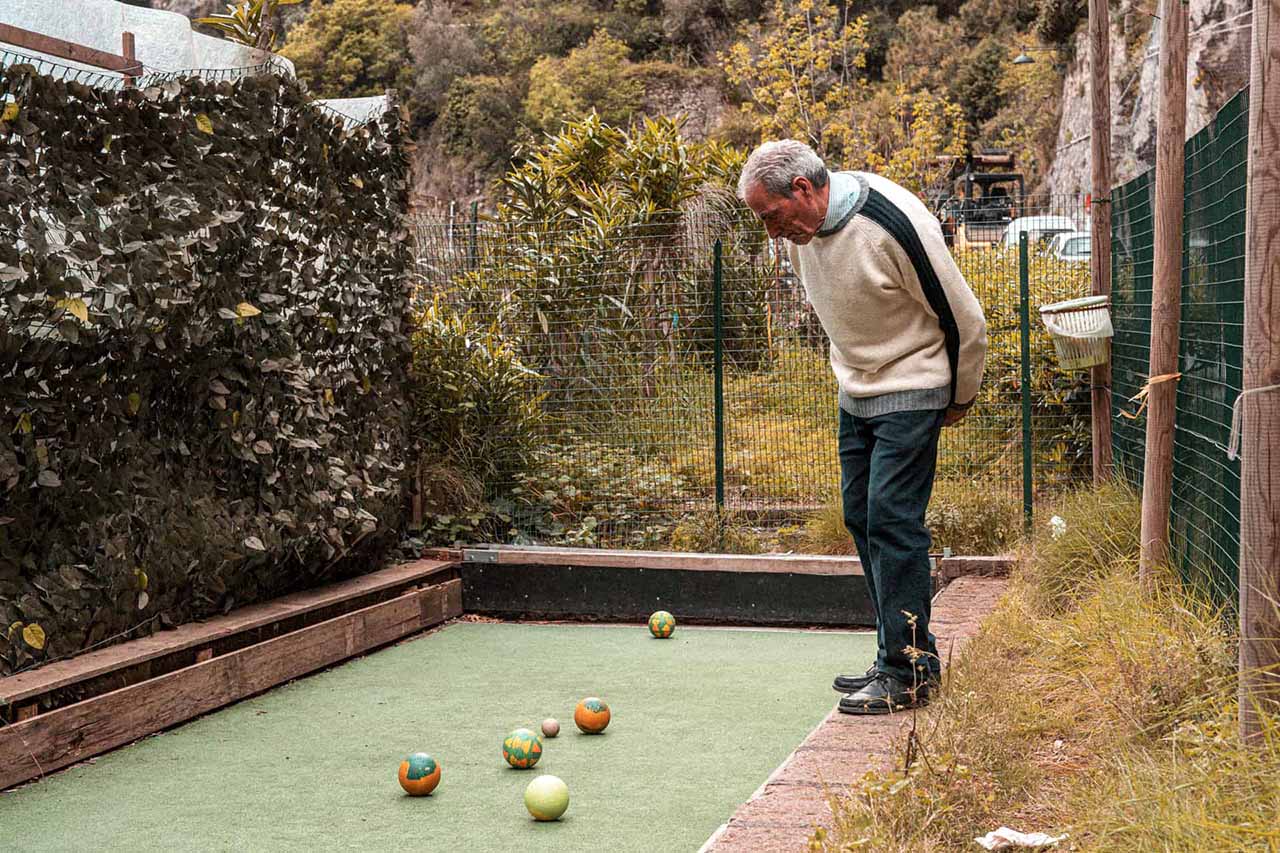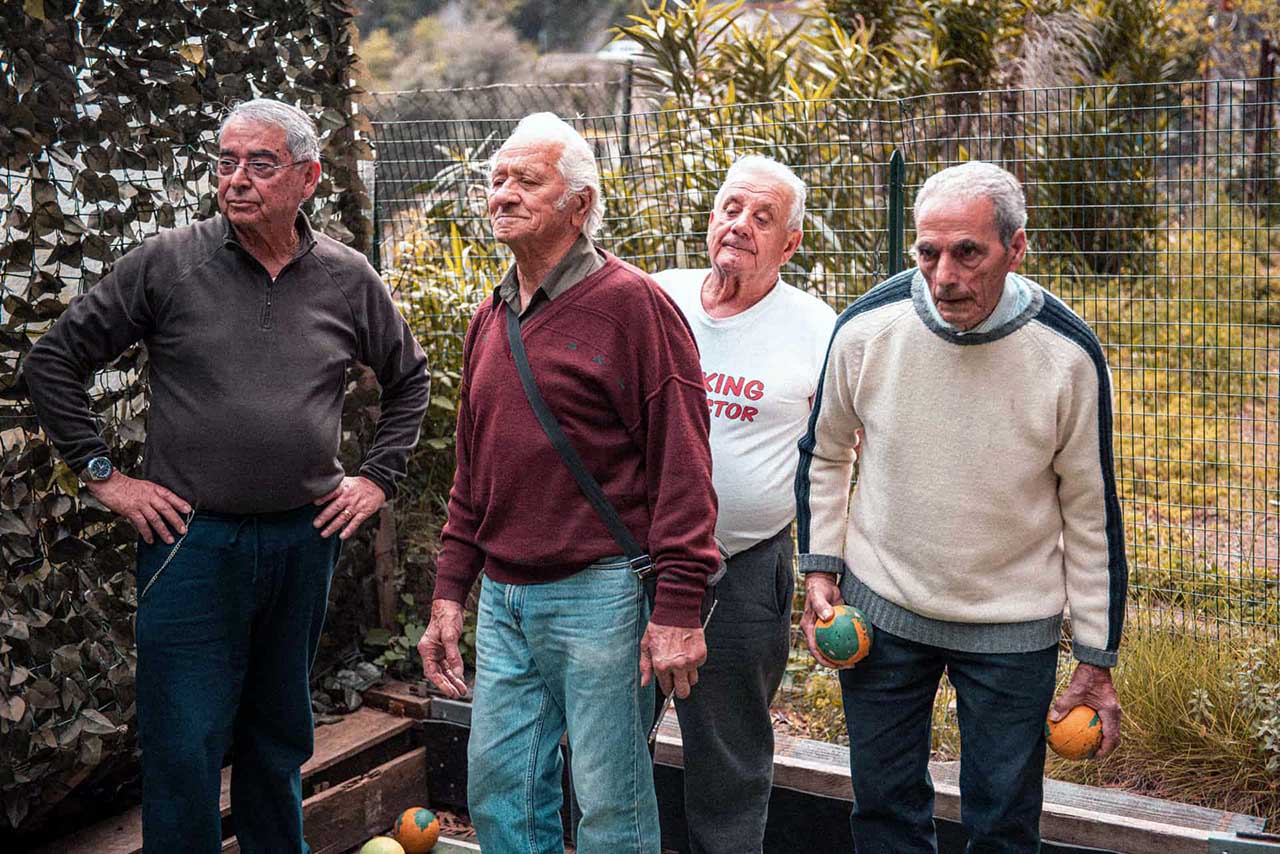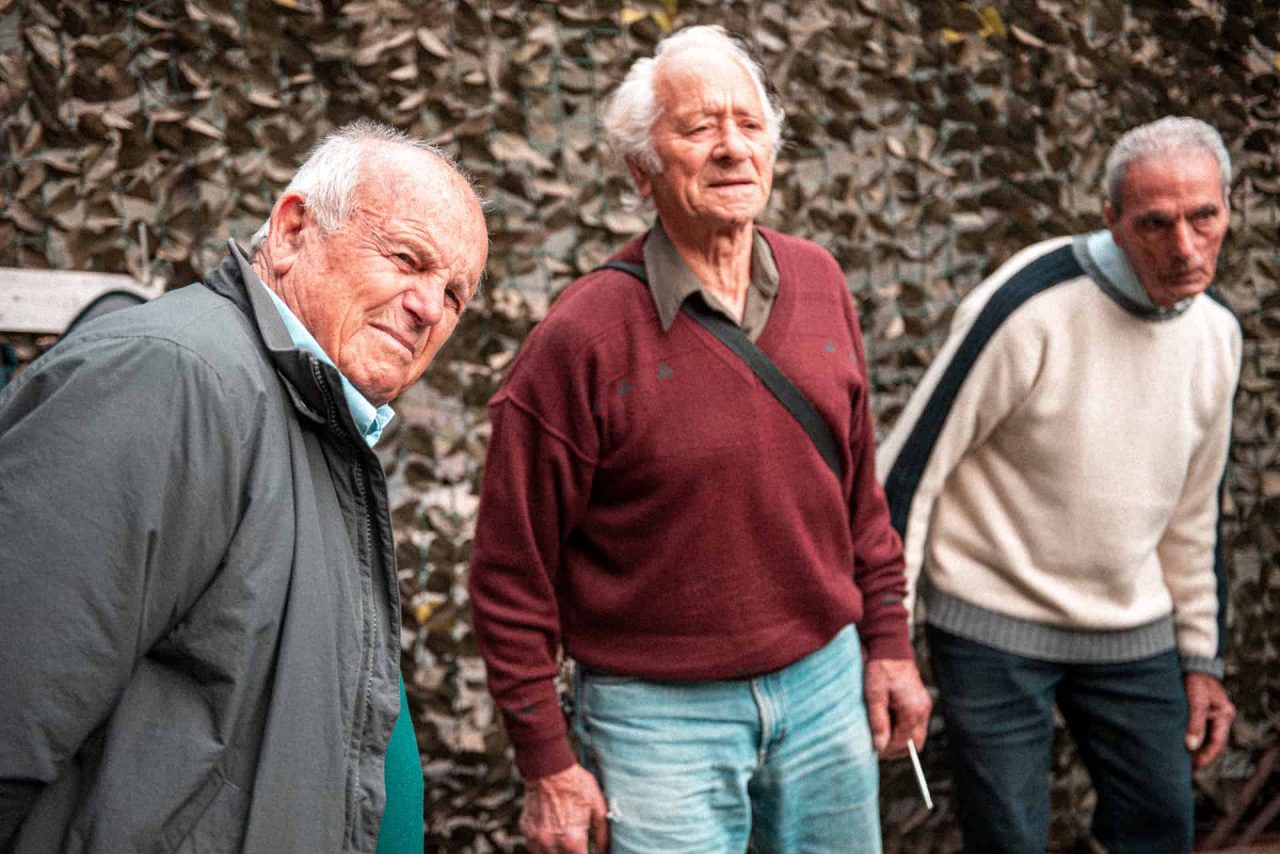From 7000 B.C. Turkey to Egyptian hieroglyphics; from the bowling alley of Pompeii to Parisian boules verds (boulevards) to Positano and Montepertuso. How one of the most ancient (recreational) activities became a gathering sport.
May 26th, 2023, by Saveria Fiore. Photo by Vito Fusco
Game or sport? For millennia, throwing bowls has seduced varied cultures at different historical moments. It began as a playful practice, a very ancient game, but it aroused competitiveness and adrenaline so much that it soon became a recognized sport.
In the sunny atmosphere of Positano, it is still practiced today. It is mainly the hearth of life for many local elders. Usually, during the early afternoon hours, they meet on the state highway along a curve that gathers a small corner of the green.
In this area, located within a fitness trail the municipality desires, a bocce court has been built, running along the edges of an unrolled rectangle on a soft green carpeted floor.

Competition for all ages
It is more than just a way for older people to stay active. It is sport becoming a tool for mental and physical well-being and social inclusion. Especially in segments of the population whose patrimonial importance is often forgotten, the competitive moment of sports becomes a pretext for socializing, meeting, and a breath of life.
A similar field is set up in the hamlet of Montepertuso, the home of bocce tournaments that have been held for years thanks to the cooperation of local sports associations and the parish committee of St. Mary of Grace. The members are not only adults and seniors but also young people.
Everything is a reflection of an unfailing lesson: the youngsters, novices, absorb the advice of the experts: a few reedy hairs, a lot of awareness, and the right approach to defeat. The air is tense, albeit latent. No Olympic flame is needed to warm the atmosphere, and any reflection is done with the bowls standing still.
“It’s a way to feel like we’re still part of something, an excuse to spend time together and not grow old before our time … mentally, I mean,” one of the village elders among the most devoted players tells us.

To playful and ancient beginnings
The earliest evidence of their existence dates back to 7000 B.C. in Turkey, at Catal Huyuk, a Neolithic city. In 1961, stone balls were found here, with rolling marks on rough ground. In Egypt, on the other hand, wall paintings and hieroglyphics attested that these people used to play with rounded stones.
From the Greeks, primarily in Homer’s Iliad itself, to the Romans, this test of skill was an idle pastime that occupied the free hours of entire peoples. The most recognized characteristic of such a game was its democracy: from the illiterate to the literate, from the landowner to the dispossessed, every section of society participated. It is no accident that Hippocrates incensed it as a health remedy within his medical treatises.
Modern times
In the 13th century, the game of bowls took hold throughout northwestern Europe. It overcame a circuitous route opposed by the monarchs, who saw it as a fruitless use of time and far from the religious duties because of its gambling nature: it was often a spark for brawls between contenders. Imagine such a game in 16th-century Paris, where boules (boules, ed.) had succeeded along the inner green avenues of the ramparts, the boules verds (boulevards).

From the excavations of Pompeii to the martyrs’ boules clique.
No less acclaim had in the bocciodromo (the field to play) of imperial Pompeii, where a pallino (a small ball) and eight bocce balls were pulled out during excavations. In its diachronic evolution, the game of bowls became a sport (though not Olympic) recognized by CONI in 1926.
The first boccia association, however, is from Turin: the Cricca bocciofila dei martiri, from 1873. Everything is carried out according to regulations, no longer with nostalgic pilis lignei augustianae but with modern metallic balls and the equally thunderous noise of the moment. After all, Neruda himself tells us, “The child who does not play is not a child, but the adult who does not play has lost the child forever within him.”

